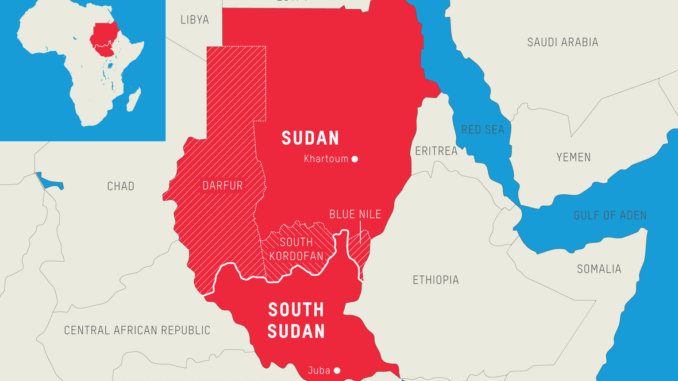
At the Joda border crossing, situated between Sudan and South Sudan, a steady stream of displaced families continues to cross in search of safety. Just 100 meters separate the two border checkpoints, with Sudan welcoming people through three raised flags, while South Sudan’s entrance is marked by a sign in both Arabic and English.
Women, carrying children and belongings balanced on their heads, and families transporting furniture and supplies on donkey-drawn carts, cross the border to escape the ongoing war in Sudan. Among them is 26-year-old Hamed Attaher, a technology student, who has journeyed for a year to reach South Sudan and is relieved to finally be in a place he feels is safe.
South Sudan, the world’s youngest country, is grappling with a dire humanitarian crisis as more than 12.5 million people in Sudan have been displaced by the conflict that erupted in April 2023. Daily, thousands continue to cross into South Sudan’s Upper Nile state, seeking refuge from the violence between Sudanese armed forces and the Rapid Support Forces. At the border, aid organisations like the International Organization for Migration (IOM) and Médecins Sans Frontières (MSF) work tirelessly to support these displaced individuals, providing medical care, emergency food, and transportation to nearby towns. Some refugees opt to settle in informal camps that have sprouted along the route, while others take buses or trucks organised by IOM.
The situation in Renk County, where many refugees have settled, is becoming increasingly desperate. Informal settlements such as Gosfami have sprouted along the White Nile River, where around 110,000 people have arrived since December. The area, however, lacks sufficient food, clean water, and basic sanitation. At Renk County hospital, doctors from MSF are overwhelmed with war-wounded patients, as well as displaced families like Bakhita’s, who fled Sudan’s Blue Nile State with her premature twins. The humanitarian response in South Sudan faces mounting challenges, not least due to financial setbacks such as the freeze on USAid funding. Despite these hurdles, aid workers continue to provide psychological and medical support to those traumatised by war, while hoping for a better future.
